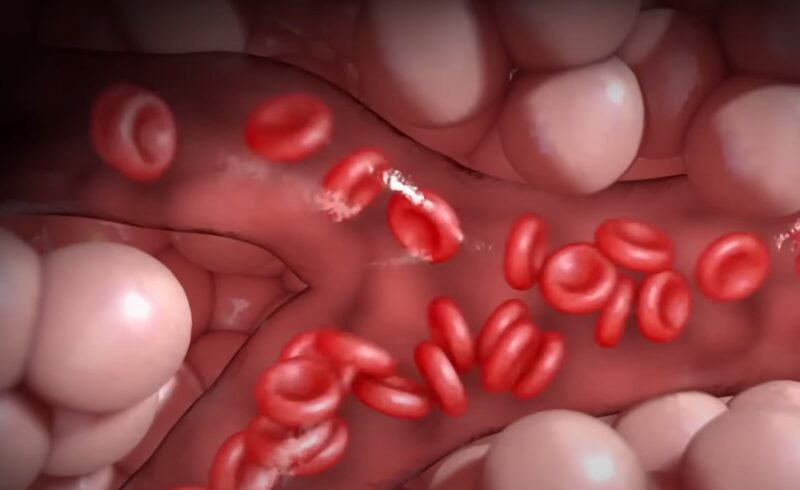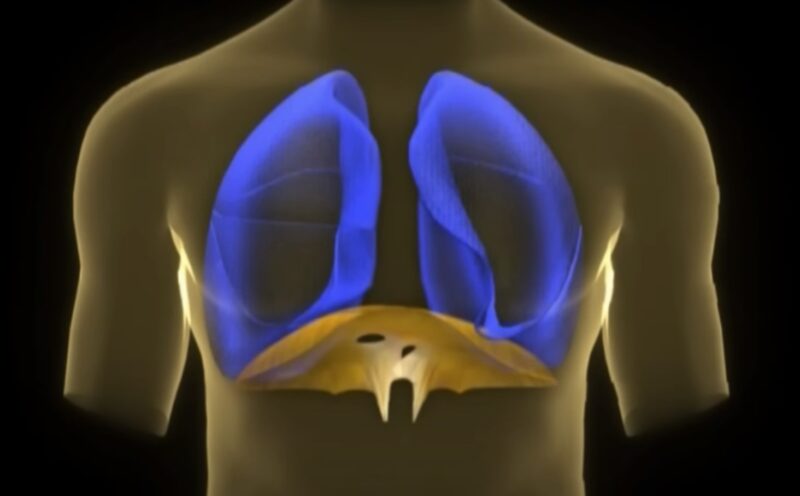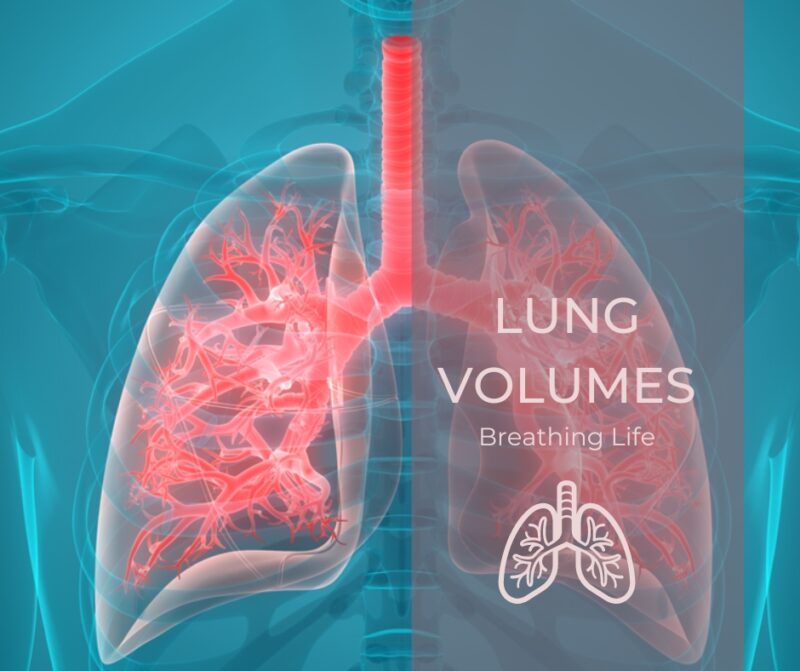Have you ever wondered how your lungs work their magic, exchanging oxygen and carbon dioxide to keep you alive and kicking?
In this blog post, we’ll discuss the inner workings of your lungs, revealing the remarkable processes that enable your body to efficiently absorb life-sustaining oxygen while expelling waste carbon dioxide.
What is Alveolar Ventilation?
It’s an important physiological factor that determines the levels of oxygen (O2) and carbon dioxide (CO2) in these functioning alveoli, and we measure it in milliliters per minute (ml/min).
The connection between alveolar ventilation and the concentrations of O2 and CO2 in the alveolar air is pretty easy to understand. When there’s a high rate of air exchange in the functioning alveoli, meaning a higher alveolar ventilation, it brings in fresh air that’s rich in oxygen and quickly removes air that’s loaded with carbon dioxide.
As a result, the concentration of oxygen inside the alveoli increases while the concentration of carbon dioxide decreases.
On the other hand, when there’s a low rate of air exchange in the functioning alveoli, meaning a lower alveolar ventilation, it brings in fresh air that’s rich in oxygen but removes carbon dioxide-laden air more slowly. Consequently, the concentration of oxygen within the alveoli decreases while the concentration of carbon dioxide increases.
According to Suresh Manickavel, the process of ventilation involves the intake of oxygen and the expulsion of carbon dioxide.
The venous blood, which is a mixture of blood from various parts of the body, transports carbon dioxide to the alveoli and picks up oxygen from there.
For a balanced diffusion between the blood and the alveolar gas, it’s crucial that both oxygen and carbon dioxide are evenly dispersed across all compartments.
Measuring Alveolar Ventilation
This equation is based on the idea that all the carbon dioxide we exhale comes from the gas exchange areas in our lungs, specifically the ventilated alveoli.
What the equation does is adjust the rate of carbon dioxide exhalation by considering the partial pressure of carbon dioxide in the alveoli. This helps to account for any variations in carbon dioxide levels that may be higher or lower than normal.
The Alveolar Ventilation Equation is as follows:
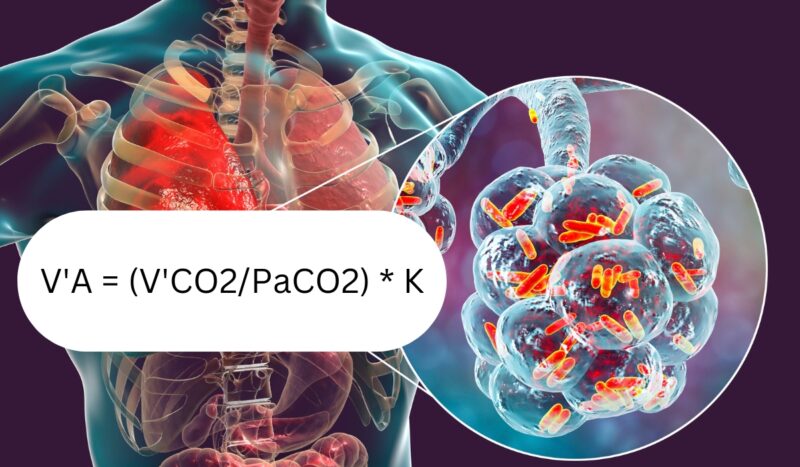
V’A = (V’CO2/PaCO2) * K Where:
In healthy individuals, the level of carbon dioxide in the air sacs of the lungs (known as alveolar carbon dioxide or PACO2) matches the amount of carbon dioxide in the arteries (referred to as arterial carbon dioxide or PaCO2).
Thus, we can replace the arterial measurement with the alveolar value. By making this substitution, we find that the amount of air ventilated in the lungs is directly related to the rate at which the body exhales carbon dioxide (V’CO2) and inversely related to the level of PaCO2.
Equation in Action
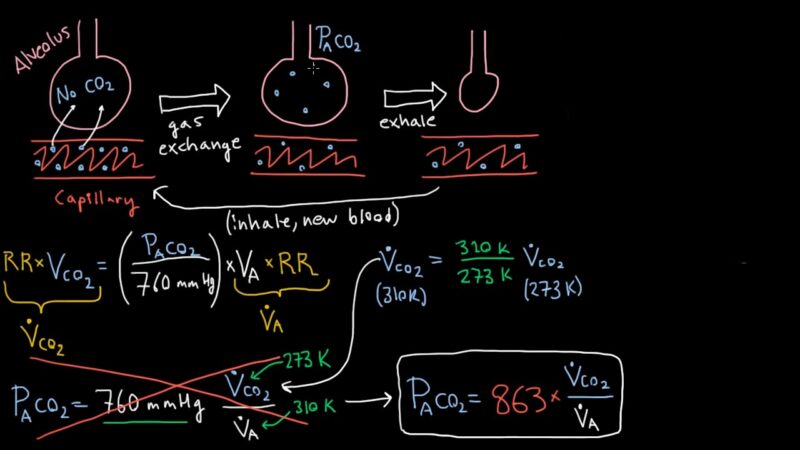
The Alveolar Ventilation Equation helps us understand how the amount of air reaching the alveoli affects the level of carbon dioxide in our arteries. Let me break it down for you.
Imagine that we double the amount of air reaching the alveoli (V’A). In order for the lungs to expel carbon dioxide at the same rate, the level of carbon dioxide in the arteries (PaCO2) needs to be cut in half. On the other hand, if we reduce the amount of air reaching the alveoli by half, the PaCO2 needs to double in order to maintain the same rate of carbon dioxide elimination by the lungs.
This equation clearly shows that when the lungs generate and eliminate carbon dioxide at a constant rate, changes in alveolar ventilation can significantly impact the level of carbon dioxide in our arteries.
Alveolar Ventilation and Arterial Partial Pressure
The alveolar ventilation equation establishes a crucial link between the rate of alveolar ventilation (V’A) and the partial pressure of arterial CO2 (PaCO2). It forms the foundation for understanding how these two factors interrelate.
If we were to double the rate of alveolar ventilation (V’A), we would witness a remarkable phenomenon: the arterial CO2 tension would decrease by half.
This inverse relationship suggests that modifications in the alveolar ventilation rate have a profound impact on the partial pressure of arterial CO2. For instance, reducing the rate of alveolar ventilation would lead to an increase in the partial pressure of arterial CO2.
Knowing these intricate connections is of utmost importance, as it enables us to appreciate the delicate balance between alveolar ventilation and arterial CO2 levels, ultimately guiding us in providing compassionate care to individuals experiencing respiratory challenges.
To gain a deeper understanding of the relationship between alveolar ventilation and lung volumes, explore more about lung volumes by visiting this resource: Lung Volumes.


